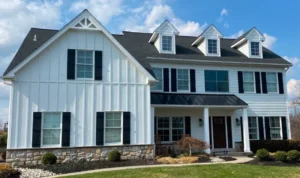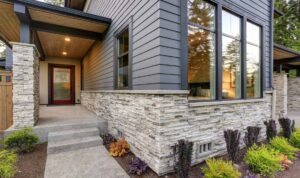Interior architecture sets the stage for this enthralling narrative, offering readers a glimpse into a story that is rich in detail and brimming with originality. From the fundamental principles to the integration of technology and sustainable practices, this field is a captivating blend of artistry and functionality.
Definition of Interior Architecture

Interior architecture focuses on the design and functionality of interior spaces, considering both aesthetic and practical elements to create environments that are visually appealing and structurally sound. It involves the planning, designing, and renovation of interior spaces to enhance the overall experience of those who use them.Interior architecture differs from interior design in that it involves a more comprehensive approach to space planning and design.
While interior design focuses primarily on aesthetics, interior architecture also takes into account the structural elements of a space, such as walls, ceilings, and floors, as well as the flow of natural light and ventilation.
Key Elements in Interior Architecture
- Space Planning: Interior architects analyze the layout of a space to optimize its functionality and flow.
- Material Selection: Choosing the right materials for surfaces, finishes, and furnishings is crucial in interior architecture to ensure durability and aesthetic appeal.
- Lighting Design: Proper lighting design is essential in interior architecture to create ambiance, highlight features, and enhance the overall mood of a space.
- Furniture Design: Interior architects often design custom furniture pieces to fit the unique requirements of a space and complement the overall design concept.
Importance of Interior Architecture
Interior architecture plays a crucial role in creating functional and aesthetically pleasing spaces that cater to the needs of the users. By focusing on the design and organization of interior spaces, interior architecture enhances the overall user experience, making spaces more efficient, comfortable, and visually appealing.
Enhancing User Experience
Interior architecture goes beyond just the aesthetics of a space; it considers how people interact with the environment and how the design can improve their overall experience. For example, well-designed interior architecture in a workspace can boost productivity by providing ergonomic furniture, adequate lighting, and proper ventilation.
This thoughtful design approach can create a more conducive and enjoyable environment for users.
Impactful Interior Architecture Projects
One notable example of a well-executed interior architecture project is the renovation of the Museum of Modern Art (MoMA) in New York City. The redesign by Diller Scofidio + Renfro transformed the interior space, creating a more open and inviting layout that enhances the visitor experience.
The strategic use of materials, lighting, and spatial organization has made the museum more accessible and engaging for art enthusiasts.Another impactful interior architecture project is the Apple Store flagship in Tokyo, designed by Foster + Partners. The store's interior architecture seamlessly blends technology with innovative design, creating a unique and immersive shopping experience for customers.
The spatial layout, use of materials, and attention to detail all contribute to making the Apple Store a destination in itself, rather than just a retail space.These examples demonstrate how interior architecture can significantly impact the functionality and user experience of a space, showcasing the importance of thoughtful design in creating environments that are both visually striking and highly functional.
Principles of Interior Architecture
Interior architecture is guided by several fundamental principles that dictate the design and functionality of interior spaces. These principles encompass the use of light, space, materials, and form to create harmonious and aesthetically pleasing environments that also serve a practical purpose.
Light in Interior Architecture
Light plays a crucial role in interior architecture as it can affect the mood, ambiance, and functionality of a space. Natural light can enhance the overall design by creating a sense of openness and connection to the outdoors. Additionally, artificial lighting can be used strategically to highlight architectural features and create different atmospheres within a space.
Space Planning
Space planning is a key aspect of interior architecture that involves organizing and arranging interior spaces to optimize functionality and flow. Designers must consider the needs of the occupants and how they will interact with the space to ensure that it is both practical and visually appealing.
Materials and Finishes
The selection of materials and finishes in interior architecture can greatly impact the overall look and feel of a space. Different materials can evoke different emotions and aesthetics, while also serving functional purposes such as durability and ease of maintenance.
The use of sustainable and environmentally friendly materials is also becoming increasingly important in interior design.
Form and Composition
Form refers to the shape and structure of elements within a space, while composition involves the arrangement and organization of these elements. Balancing form and composition is essential in creating a cohesive and visually pleasing interior design. Designers must consider proportions, scale, and the relationship between different elements to achieve a harmonious composition.
Aesthetics vs. Functionality
One of the key challenges in interior architecture is finding the balance between aesthetics and functionality. While it is important for a space to look visually appealing, it must also be practical and serve the needs of its users. Designers must carefully consider how to integrate both aspects seamlessly to create a space that is not only beautiful but also functional and comfortable for those who inhabit it.
Integration of Technology in Interior Architecture

Technology plays a crucial role in shaping modern interior architecture practices. From smart systems to sustainable materials, digital innovations have revolutionized the way designers approach interior spaces.
Smart Systems in Interior Architecture
Smart systems have become increasingly popular in interior architecture, allowing for greater control and customization of various elements within a space. For example, smart lighting systems can adjust brightness and color temperature based on natural light levels, time of day, and user preferences.
This not only enhances the aesthetics of a space but also improves energy efficiency.
Sustainable Materials for Interior Design
The use of sustainable materials has become a key focus in interior architecture, driven by the need for eco-friendly design solutions. Materials such as reclaimed wood, recycled plastics, and low-VOC paints are being incorporated into interior spaces to reduce environmental impact.
These materials not only promote sustainability but also add a unique and natural touch to the design.
Digital Innovations Transforming Interior Architecture
Digital innovations, such as virtual reality (VR) and augmented reality (AR), are transforming the way designers visualize and present interior spaces. VR technology allows clients to experience a space before it is built, enabling them to make informed decisions and providing designers with valuable feedback.
AR, on the other hand, can overlay digital information onto physical spaces, allowing for interactive and immersive design presentations.
Examples of Cutting-Edge Technologies in Interior Architecture
3D Printing
Architects and designers are using 3D printing technology to create intricate and customized elements for interior spaces, such as furniture, lighting fixtures, and decorative accessories.
Internet of Things (IoT)
IoT devices are being integrated into interior design to create smart homes and connected spaces that can be controlled remotely through smartphones or voice commands.
Biophilic Design
This design approach incorporates natural elements and greenery into interior spaces, promoting health and well-being through the use of plant walls, living roofs, and indoor gardens.
Sustainable Practices in Interior Architecture
Sustainability has become a crucial aspect of interior architecture, focusing on creating spaces that are environmentally friendly, energy-efficient, and socially responsible.
Importance of Sustainability in Interior Architecture
Integrating sustainable practices in interior architecture not only helps reduce the environmental impact of buildings but also promotes the well-being of occupants. By using eco-friendly materials, energy-efficient designs, and green building practices, interior architects can contribute to a healthier and more sustainable future.
Eco-Friendly Materials and Energy-Efficient Designs
Interior architects are increasingly turning to eco-friendly materials such as reclaimed wood, bamboo, cork, and recycled glass to reduce the carbon footprint of their projects. Energy-efficient designs, including natural lighting, proper insulation, and energy-saving appliances, help minimize energy consumption and lower utility costs.
Green Building Practices
Green building practices involve incorporating sustainable features like green roofs, rainwater harvesting systems, and solar panels into interior architecture projects. These practices not only reduce the environmental impact of buildings but also create healthier and more comfortable indoor environments for occupants.
Examples of Sustainable Projects
- One example of a sustainable interior architecture project is the Bullitt Center in Seattle, which is designed to be a net-zero energy building, generating as much energy as it consumes.
- Another example is the Edge in Amsterdam, a sustainable office building that features smart technology and green spaces to enhance productivity and reduce environmental impact.
- The CopenHill waste-to-energy plant in Copenhagen is another notable project that combines sustainable architecture with recreational spaces, including a ski slope on its roof.
Cultural Influences on Interior Architecture
Interior architecture styles are greatly influenced by the diverse cultures around the world. Different cultural backgrounds bring unique perspectives, traditions, and aesthetics that shape the way interior spaces are designed and decorated.
Impact of Cultural Heritage
Cultural heritage plays a significant role in shaping interior architectural designs. It reflects the history, beliefs, values, and lifestyle of a particular culture, which are translated into the design elements and overall ambiance of a space. For example, traditional Chinese interiors often feature intricate woodwork, symbolic motifs, and feng shui principles, reflecting the rich history and cultural practices of China.
Cultural Diversity in Aesthetics
Cultural diversity enriches interior architecture aesthetics by introducing a variety of design elements, materials, colors, and patterns. For instance, the vibrant colors and geometric patterns of Moroccan interiors, the minimalism of Japanese design, or the opulence of Baroque style all contribute to a diverse and visually stimulating design landscape.
The fusion of different cultural influences can result in unique and eclectic interior spaces that celebrate global heritage and creativity.
Conclusion

As we conclude our exploration of interior architecture, we are reminded of its profound impact on the spaces we inhabit. With a keen eye for design and a commitment to sustainability, interior architecture continues to shape environments that inspire and delight.
Questions Often Asked
What is the difference between interior architecture and interior design?
Interior architecture focuses on the structural elements and layout of a space, while interior design deals with the aesthetics and décor.
How does technology influence modern interior architecture?
Technology impacts interior architecture through smart systems, sustainable materials, and digital innovations that enhance functionality and design.
Why is sustainability important in interior architecture?
Sustainability in interior architecture promotes eco-friendly materials, energy-efficient designs, and green building practices for a healthier environment.






